Indian cuisine has struggled to find its place in Taiwan’s international food scene. Not rare enough to be cast among the “exotic” types that have but a handful of representative restaurants in Taipei (think Peruvian, Russian or even Turkish), nor popular enough to join the mainstream giants (Italian, Thai, Korean), it occupies a culinary no man’s land where most restaurants stick to the predictable Taj Mahal formula to get noticed.
My passion for the condiments of the subcontinent began back in college, cooking with my Indian roommate. Years spent bonding over the rituals of onion chopping and roti tossing, we not only forged a lasting friendship, but also fine-honed a string of curries that have been the talk of countless dinner parties I’ve hosted since. I’m the kind of person who has a list of favorite Indian restaurants, and I’m always looking to add to it.
And so it was with high hopes that my wife and I came to Saathiya (莎堤亞), located on a second floor on Xinyi Road (信義路), just above Dongmen MRT Station (東門). You’d miss it if it weren’t for the orange, green and white menu stand at the bottom of the stairwell. Nothing, (except perhaps the Taj Mahal), says Indian restaurant quite like the country’s trademark tricolor.
.jpg)
Photo: Liam Gibson
We sit by a large window at the far end of the space which overlooks Xinyi Road. Its low-key for a Saturday night. The place is almost empty except for a couple of tables. The walls of the place are lined with abstract paintings of a remarkably consistent style, courtesy of the owner’s friend and long-term Taiwan resident, artist Sagar Telekar. The paintings are aesthetically pleasing, but stand in jarring contrast next to the flat-screen monitor playing an MTV-like stream of Bollywood dance scenes. The seats are Ikea-chic: simple, black and covered with a nice padding that upon second squeeze feels like one of those thick, cushy mouse pads that gamers use.
We are served by a young Mongolian waiter/waitress duo. Neither can speak Chinese, (nor Hindi for that matter), “Only English,” they say. My wife lets me order.
Flavoring a curry’s gravy with methi (fenugreek seed powder) takes experience. Believed to have special medicinal properties, it’s something of an acquired taste, even in India. I’ve ruined plenty of curries crossing the threshold where stimulating acidic bite becomes bittery awfulness. Saathiya’s methi malai paneer (NT$350) past the test. The methi flavor is subtle, but noticeable, just as it should be.
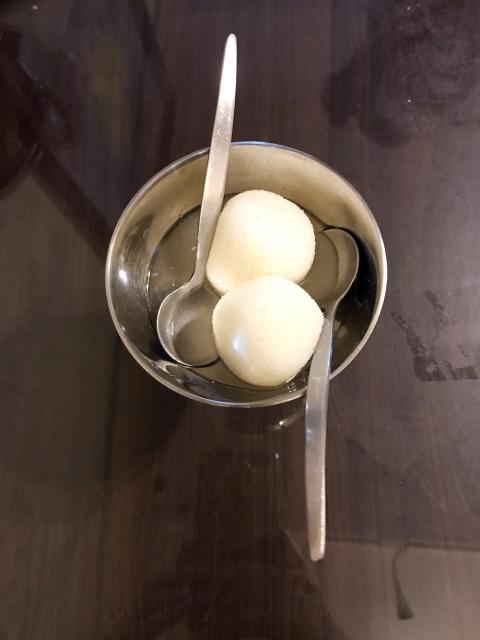
Photo: Liam Gibson
A plain lassi (NT$100) is a must if you’re sampling multiple curries in one sitting. Its tangy/salty sharpness helps bring your palate back to ground zero in a quick neutralizing gulp. This one delivered the palate-purging hit and a satisfying mouthful of yoghurt-milky frothy goodness.
The aloo paratha (NT$125) was a major disappointment. Undercooked, damp, oily and served on ugly pieces of paper towel.
One critical test for any restaurant, but especially so for Indian ones, is whether or not they can tailor the spice level to your specifications. Saathiya needs to work on this. I asked for the Hyderabadi special chicken curry (NT$380) to be very spicy and it was medium, at best. If they can’t get it right using their preferred English, I can’t imagine how they’d fare in Mandarin.
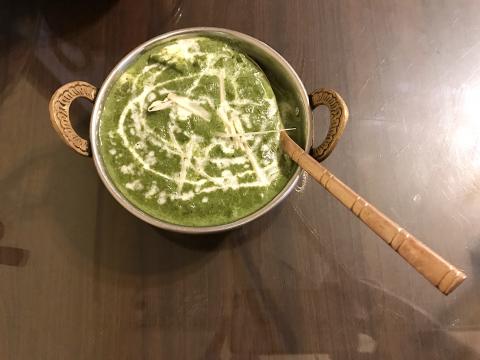
Photo: Liam Gibson
The spinach-based gravy of the palak paneer (NT$320) was smooth, thick and just a little pulpy. Unfortunately, that was all this dish got right. The paneer was sliced into cubic pieces, chewy but bland. Lightly frying paneer with jeera (cumin seeds) really transforms its flavor. But it seems they’d rather skimp on the seeds here, and so its aromatic potential was left unrealized. Inch-sized onion slices were an unpleasant surprise. This faux pas would have been permissible if it were accompanied by other veggies such as bell peppers, (as is usual in dishes like paneer tikka masala), but as it was the only vegetable in the gravy, it was hard to overlook.
For desert, we ordered rasgulla (NT$90) as gulab jamun wasn’t available. Two white balls come soaked in a little pool of syrup. To really relish the heady-sensation it offers, rasgulla, like gulab jamun, should be taken in one bite. One bite of heavenly bliss. The ball’s sponginess resists the weight of your jaws as they slowly clamp down, letting the syrup slowly ooze and flow out over your teeth and tongue. The sponge becomes firmer as you push into the core before finally splitting and filling your cavity with a sugary mouthful of sinful proportions.
I wish the rest of the meal had delivered similar levels of sensory satisfaction, but all in all, it was hit and miss. At just over a year old, Saathiya is a new arrival on Taipei’s indistinct Indian scene, and like a toddler, still trying to find its feet. Above the MRT, it’s very accessible and a stroll around the pretty backstreets of Dongmen is nice after dinner. Yet I wouldn’t go out of my way to come back to Saathiya.
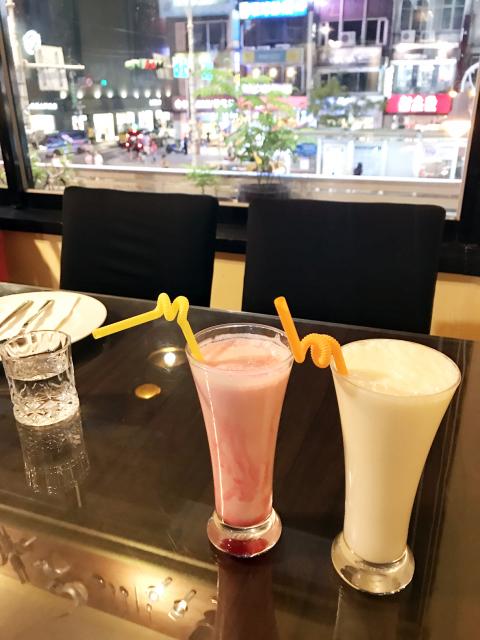
Photo: Liam Gibson
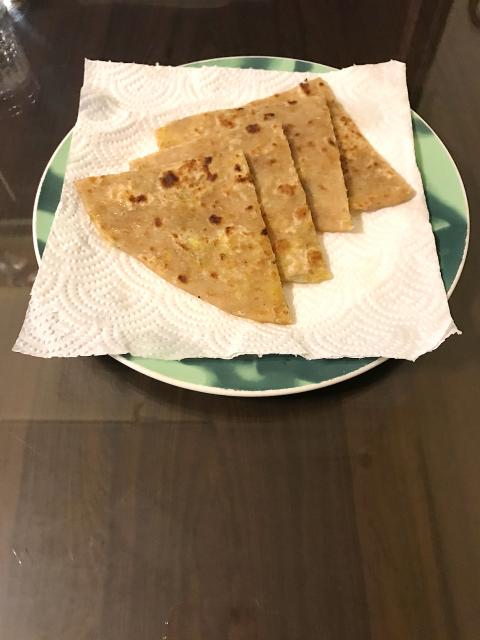
Photo: Liam Gibson

Most heroes are remembered for the battles they fought. Taiwan’s Black Bat Squadron is remembered for flying into Chinese airspace 838 times between 1953 and 1967, and for the 148 men whose sacrifice bought the intelligence that kept Taiwan secure. Two-thirds of the squadron died carrying out missions most people wouldn’t learn about for another 40 years. The squadron lost 15 aircraft and 148 crew members over those 14 years, making it the deadliest unit in Taiwan’s military history by casualty rate. They flew at night, often at low altitudes, straight into some of the most heavily defended airspace in Asia.

Beijing’s ironic, abusive tantrums aimed at Japan since Japanese Prime Minister Sanae Takaichi publicly stated that a Taiwan contingency would be an existential crisis for Japan, have revealed for all the world to see that the People’s Republic of China (PRC) lusts after Okinawa. We all owe Takaichi a debt of thanks for getting the PRC to make that public. The PRC and its netizens, taking their cue from the Chinese Communist Party (CCP), are presenting Okinawa by mirroring the claims about Taiwan. Official PRC propaganda organs began to wax lyrical about Okinawa’s “unsettled status” beginning last month. A Global

Taiwan’s democracy is at risk. Be very alarmed. This is not a drill. The current constitutional crisis progressed slowly, then suddenly. Political tensions, partisan hostility and emotions are all running high right when cool heads and calm negotiation are most needed. Oxford defines brinkmanship as: “The art or practice of pursuing a dangerous policy to the limits of safety before stopping, especially in politics.” It says the term comes from a quote from a 1956 Cold War interview with then-American Secretary of State John Foster Dulles, when he said: ‘The ability to get to the verge without getting into the war is
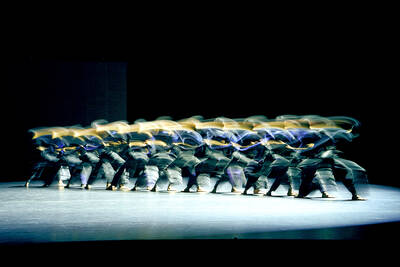
Like much in the world today, theater has experienced major disruptions over the six years since COVID-19. The pandemic, the war in Ukraine and social media have created a new normal of geopolitical and information uncertainty, and the performing arts are not immune to these effects. “Ten years ago people wanted to come to the theater to engage with important issues, but now the Internet allows them to engage with those issues powerfully and immediately,” said Faith Tan, programming director of the Esplanade in Singapore, speaking last week in Japan. “One reaction to unpredictability has been a renewed emphasis on